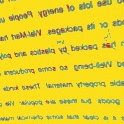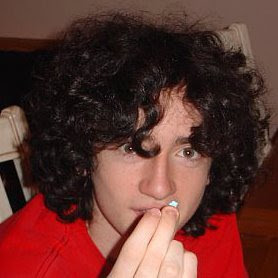concordance experiment
My writing class is high-level graduate students who really want to know how to polish their writing well and quickly. They don't have patience for things that don't work, or things that give you the runaround on their road to where they are going. We study social psychology, because it gives us something to study about that everyone's interested in, that we can do an actual survey on, and get real data - one result of this is that I, as a teacher, become a little impatient with vague pronouncements about our culture, since I am usually in the active process of studying it systematically if not scientifically. For example, one can say that Texas is full of Republicans, and anti-gay marriage, and all of this might be true in a general kind of way, but our studies have shown statistically what our student body is like, and this helps me talk about it more accurately and have some facts to back me up.Now on this road I've also become attracted to the concordance, and specifically to Brigham Young's concordance, because as far as I can figure, it's the best one around. The concordance delivers to you the facts about the words. So, for example, I tell my students that so that is different from so (and generally they believe me) - but, with the concordance I can draw up thirty, forty sentences using so that and show them how people are using it. It draws from a large corpus (and one can mess with how large, or what kind), and simply pulls the facts about any given word. My favorite example is interested in...why is it that it's not interested with or interested by?
So I gave them all an assignment...I told them you have grammatical issues. I want you to look at this concordance, and tell me what you find about those issues. Report to me about how it works in learning more about grammar and how it works.
But alas, at the language lab, BYU got onto us, and told us that with a group, many people making searches from a single location, there was a limit, and we were beyond it already. You have to log on, and you have to have an account, and if you are merely a student, you have quite limited access.
I understand their financial bind, and know why they might feel they need to raise money to keep the thing going. And, it seems to me, a place like our university ought to fork a little money over in order to grease the wheels, and keep the good facts coming, and provide a service much like the databases provide articles for us. I, however, have not written a proposal, or identified that need, or suggested that our department make that service available for our graduate students. Our students are still on their own: you log in once, on your own e-mail; you go as long as they let you; and, you see if you can use the facts to make yourself a better writer.
I stand by my assignment (this problem is not resolved yet) - it may be that asking them to try this tool is simply not realistic, because we don't have a site license yet. But to me, there is something quite liberating about the facts. It's more than a teacher telling them, you need to connect two sentences with whereas. It's twenty or thirty sentences that give the student a picture, a snapshot, of how whereas is used in modern academic English. For them, they have to read it twenty or thirty times to get a sense of how it's used effectively. This concordance, the provision of twenty or thirty sentences using the word, gives them the missing step. It will be a shame if they can't, as a group, just use what's out there effectively.
Labels: concordance, grammar, ttu, writing


















































